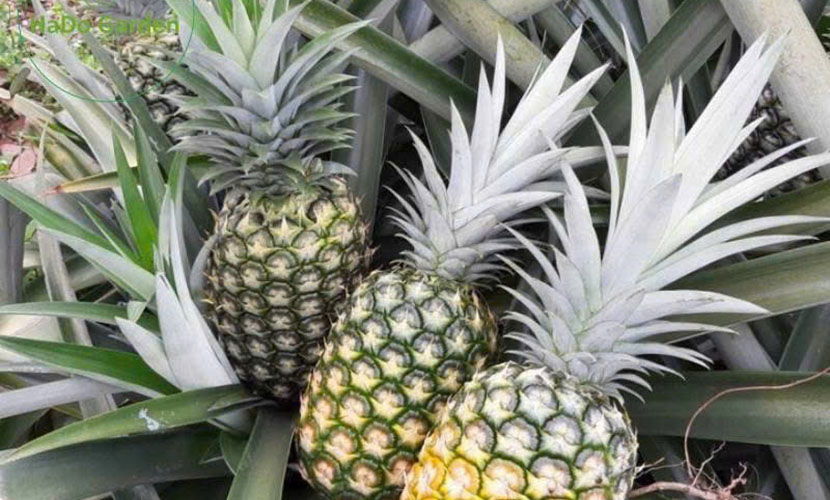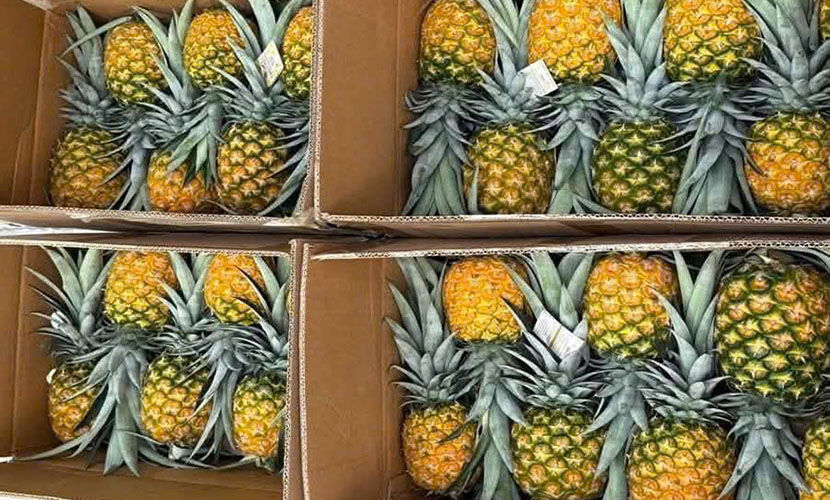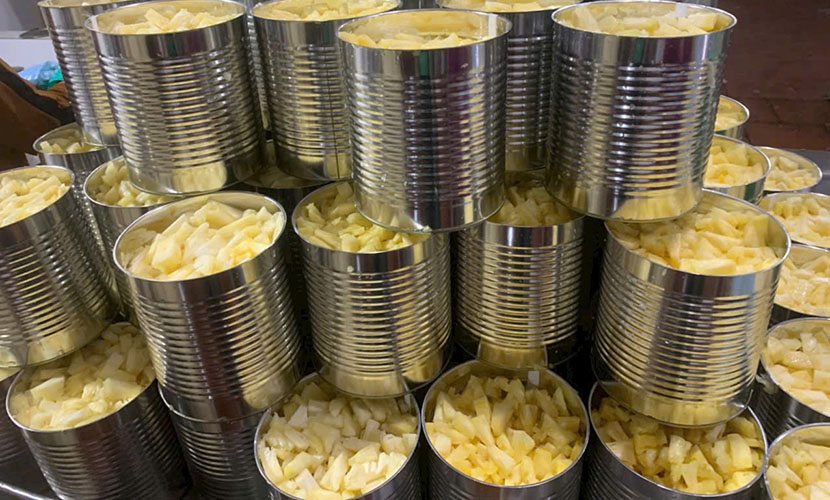
Vietnamese pineapple is showing many advantages in terms of yield and quality. However, the production chain from seed selection, cultivation to processing remains fragmented and uncoordinated. To expand into international markets, a well-planned strategy is needed, from zoning cultivation areas to standardizing the supply chain.
Many experts agreed that pineapple is at a crucial development turning point. It has huge potential to become a key agricultural product not only regionally but also on the global market.
Mr. Duong, an official from the Ministry of Trade and Environment, noted that there is still great potential for developing sectors such as tea, citrus fruits, and pineapple in the North Central region. Pineapple especially adapts well to dry conditions, offering better fruit quality under hot and arid weather.

Vietnamese pineapple
Vietnamese pineapple is particularly suitable for converting low-efficiency rice lands or areas lacking irrigation water, due to its strong growth and high commercial value. In Thuong Duc commune, Ha Tinh province, many pineapple bushes have produced off-season fruit weighing 1.6–2 kg each.
Preliminary yields are reaching about 60 tons per hectare. With a contract purchase price of 5,500 VND/kg, farmers can earn at least 200 million VND per hectare. It is three times higher than traditional acacia forestry.
From a business perspective, Dr. Khue, Chairman of a Vietnamese export company, evaluated that pineapple is a year-round crop. Unlike seasonal fruits such as mango, orange, and longan, Vietnamese pineapple is a great advantage in organizing production and export.
The MD2 pineapple variety is proving highly profitable. A single 18-month cycle on one hectare can potentially yield profits of up to 700 million VND.
Pineapple processing and export markets worldwide are growing steadily by 5–6% annually. This growth is especially strong for products such as juice, canned pineapple, and frozen pineapple. Vietnam currently ranks 11th globally in pineapple production.

Fresh pineapple from Vietnam
In 2024, Vietnam produced about 760,000 tons of pineapples. In addition, Vietnamese pineapple has strong potential to break through by improving quality and deep processing.
However, the Vietnamese pineapple sector faces many challenges, particularly in high-quality seed supply and supply chain coordination. The MD2 variety accounts for less than 5% of pineapple planting area domestically. It is much lower than the global rate of over 50%. The main causes include limited propagation capacity, high initial costs, and lack of large-scale technology transfer programs.
To overcome these challenges, Mr. Khue suggests a comprehensive strategy. It includes zoning concentrated planting areas, accelerating technology transfer for propagation, and supporting farmers during the conversion phase. In addition, it includes state policies to accompany businesses in seed import, raw material zone development, and product procurement.

Canned pineapple from Vietnam
Applying quality standards such as Vietgap and Globalgap and organizing a linked production model between enterprises and farmers will enhance competitiveness. This will help target demanding markets such as Japan, South Korea, and China, reducing dependence on unofficial export channels.
In the long term, the Ministry of Agriculture and Rural Development is adjusting pineapple cultivation plans toward controlled expansion linked to production, processing, and consumption chains by 2030. The Chinese market remains a key target in the North Central region’s agricultural export strategy.
From initial successes in Ha Tinh to business strategies and policy adjustments, pineapple is gradually affirming its position as a high-quality agricultural product with great export prospects. Realizing this potential requires building a complete development ecosystem, from seeds, techniques, and supply chain links to deep processing. The coordinated roles of the government, businesses, and farmers are decisive factors for success.
Vietnamese source: https://thuonghieusanpham.vn/tu-giong-den-che-bien-dua-viet-vuon-ra-thi-truong-the-gioi-81875.html
